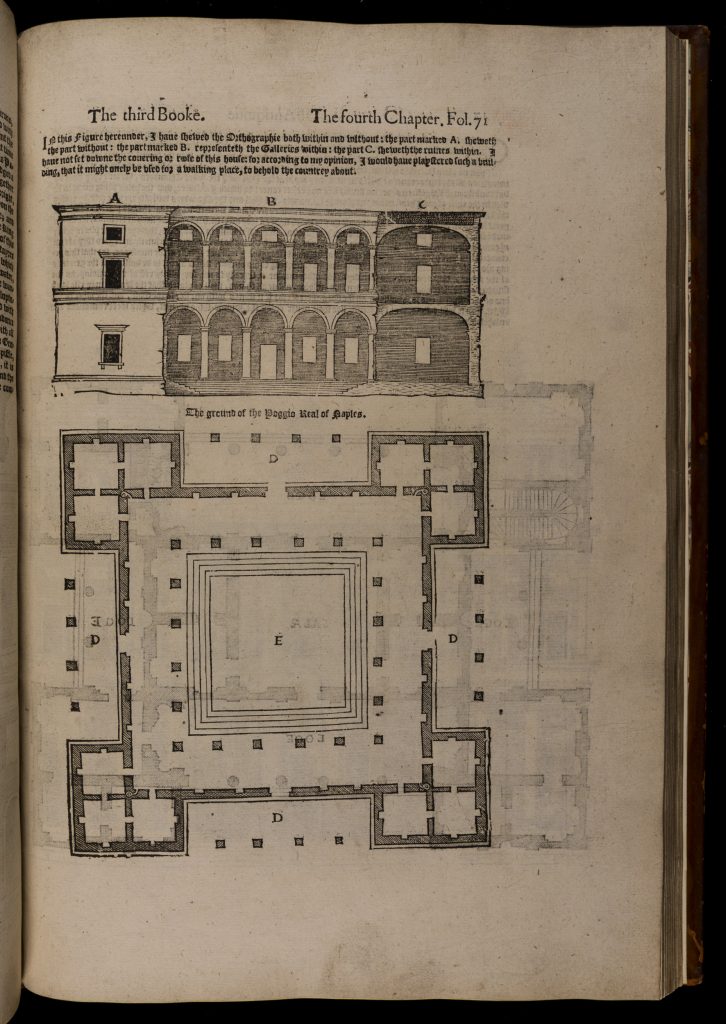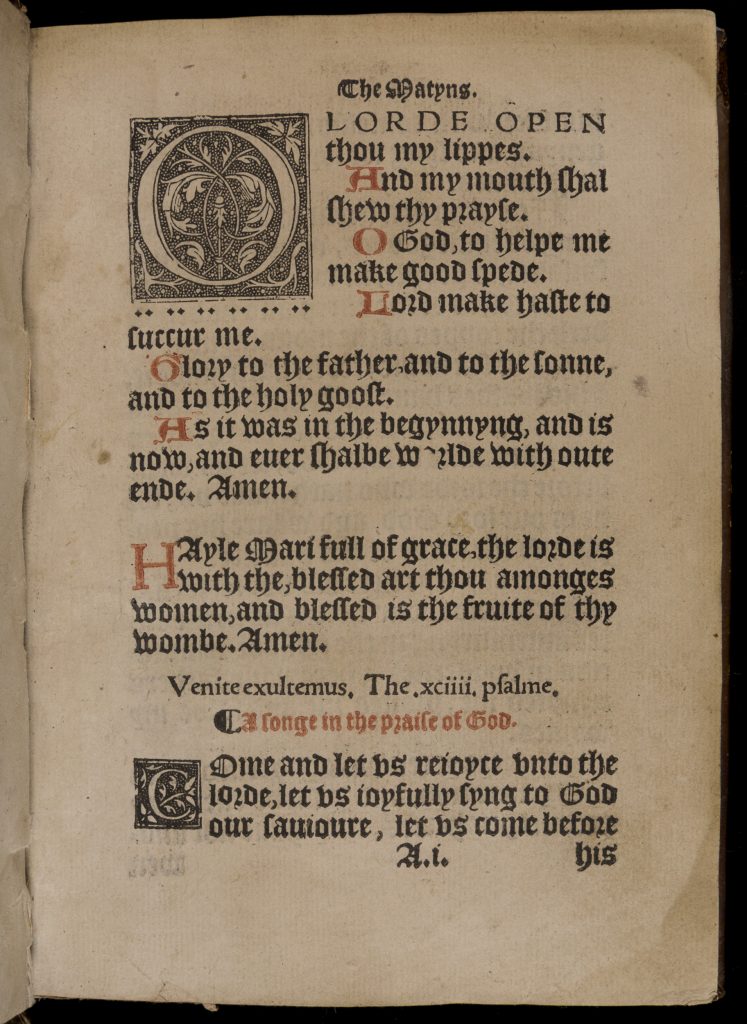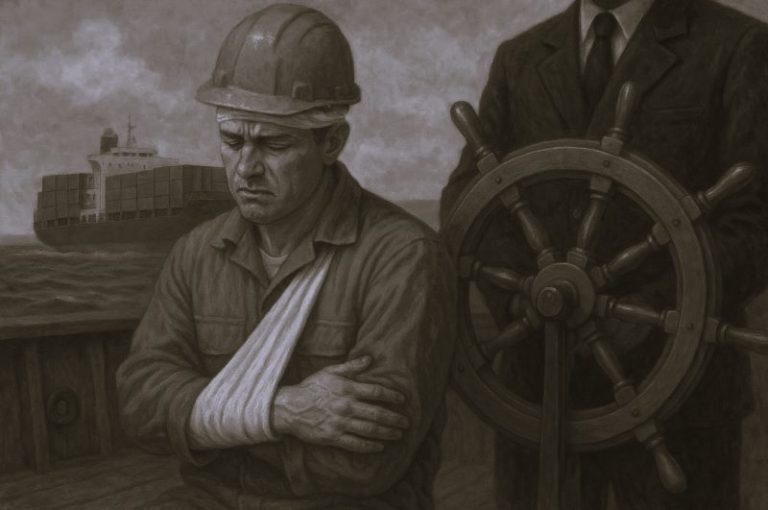
Originally published by Newberry Digital Collections for the Classroom, 08.29.2017, Newberry Library, republished with permission for educational, non-commercial purposes.
Introduction
The Tudor age spans 118 years and the reigns of five monarchs. The first Tudor king, Henry VII, ascended the throne following a period of dispute between two branches of the royal family, the houses of Lancaster and York; the period is commonly referred to as the Wars of the Roses, though it was less a civil war than a dynastic quarrel. The roses refer to the emblems used by each royal house: a red rose for Lancaster and white for York. When Lancastrian Henry Tudor finally ended the dispute in 1485 by marrying Elizabeth of York, he combined the red and white roses to create the Tudor rose, a visual statement of unification.
The accession of Henry VII as the first Tudor king is generally considered the end of the Middle Ages in England. Henry instituted new policies to curb the power of the nobility and prevent them from raising private armies to challenge his authority. He also worked to institute commercially oriented policies that resulted in economic prosperity. He patronized William Caxton, the first printer to set up shop in England, and brought in Continental scholars. Henry VII also sponsored John Cabot on his first expeditions to North America.
Henry VII was succeeded by his second-born son, Henry, in 1509. In the early years of his reign, Henry VIII largely left governing to his highly capable Chancellor, Cardinal Wolsey. However, Wolsey failed to secure Henry a divorce from his first wife, Catherine of Aragon, in 1529 and fell from favor. Archbishop Thomas Cranmer granted Henry his annulment, but the king was excommunicated by the Pope in 1533. In response, Henry declared himself Supreme Head of the English church and broke off relations with Rome in 1534. Over the later years of his reign, Henry became increasingly tyrannical and cruel, dissolving the monasteries, executing dissenters, including two of his six wives, and leaving the country bankrupt.
Though Henry VIII had two older daughters, Mary and Elizabeth, his young son Edward ascended the throne upon Henry’s death in 1547. Just nine years old, Edward VI’s government was managed by two Protectors, first Edward Seymour, Duke of Somerset, then John Dudley, Earl of Warwick. Under their guidance, the Reformation in England was consolidated. However, Edward VI’s rule was short-lived. He died of tuberculosis at the age of fifteen. Prior to his death, John Dudley persuaded the king to name his Protestant cousin Lady Jane Grey as his heir, rather than his devoutly Catholic half-sister Mary. After just nine days, Mary advanced on London and claimed the throne.
Mary’s short reign from 1553-1558 was a time of religious persecution and political upheaval. A devout Catholic, Mary repealed Protestant legislation, reinstated heresy laws, and restored Papal authority. Many leading Protestant clerics were dismissed and executed, to be replaced by Catholic appointments. Though many opposed her sharing the English throne with a Catholic foreigner, Mary married Philip of Spain in 1554. Philip left England shortly after the wedding and never returned. The marriage produced no children, so when Mary died in 1558, she was succeeded by her younger half-sister, Elizabeth.
By the time Elizabeth Tudor, Henry VIII’s second daughter, ascended the throne in November 1558, she faced a country divided between Catholicism and Protestantism, bankrupt, with governmental power in the hands of an insecure elite. In spite of these liabilities, or perhaps because of them, Elizabeth I is remembered as one of history’s great monarchs, unifying an England troubled by financial, fiscal, and cultural difficulties, and presiding over a period of literary brilliance, adventure, increasing prosperity, and significant developments in the arts.
It is against this historical backdrop that Tudor visual culture developed and thrived. Visual culture refers not just to fine art and architecture, but also to “low” cultural forms like print media, communications, and performance. The visual culture of Tudor England is a rich blend of Continental Renaissance Classicism and native English Medieval traditions. It encompasses the visual arts like painting and architecture, as well as new developments in print culture, performance, and pageantry. It is colored by dramatic swings between Catholicism and Protestantism, expanded educational opportunities, and by new discoveries across the Atlantic.
Celebrating the Monarchy

Henry Tudor brought England back together after the dynastic struggles of the Wars of the Roses. The Tudors generated great national pride, mainly by seeking the involvement of many sectors of the population in the development of national institutions. Henry VII’s favoring of the merchant and manufacturing classes stimulated economic activity and the introduction of Renaissance ideas produced a distinctive English Renaissance in architecture, literature, and the theater. Henry VIII was likewise influential in patronizing art and architecture, particularly with an eye toward celebrating English identity and history. He was a great lover of ostentatious display, whether in houses or in medieval-style entertainments with himself at the center of the action. This inclination to make a visual statement is apparent early in Henry VIII’s reign. In 1520, Henry traveled to France with a retinue of 4000 to meet with Francis I. For seventeen days the two monarchs attended masses, jousts, feats and wrestling matches, and feasts. The gathering, called the Field of the Cloth of Gold, was an expression of power, with the monarchs resplendent in the chivalric environment they had created.

Henry VIII was equaled in the splendor of his visual statements by his younger daughter, Elizabeth. By 1564, she had begun her yearly progresses through the country, a brilliant fusion of propaganda and pageantry, with herself at the center of the English universe. Each summer the queen and her court would leave London to visit the greatest lords of the realm, who spared no expense in housing and entertaining her. There would be tournaments, mock battles, pageants, ceremonies, performances, and banquets for her entertainment, and Elizabeth and her court were lodged in great houses built or improved for the purpose of receiving her. The chosen noblemen vied for this privilege, in spite of the ruinous expense to even the wealthiest, and sought to surpass each other in the magnitude of their houses and entertainments. In creating this intensely visual ceremonial presence, Elizabeth used her singular role as a sole woman ruler to her advantage.
Classical Influences
The visual culture of sixteenth-century England was a vibrant mixture of Continental Renaissance ideals and a strong native English tradition based on a predominantly Gothic aesthetic. The mixture is most clearly apparent in architecture and literature.

Both Henry VII and Henry VIII were avid builders, constructing large palaces to celebrate the Tudor dynasty. Henry VII built large palaces at Richmond and Greenwich. Henry VIII built St. James’s and Nonsuch Palaces and expanded others, including Hampton Court. The overall appearance of these buildings is castle-like and essentially Medieval.
None of Henry VIII’s children were great builders, but during the reign of Elizabeth, architecture again became a prominent activity among the nobility, mainly in the construction of great houses as places to receive the queen. Although Elizabethan architecture remains essentially medieval in its aesthetics, Classical influences are readily apparent and were incorporated largely as a result of Humanist education and popular architectural treatises like those of Italian architects Sebastiano Serlio and Andrea Palladio or the ancient writer Vetruvius. It is not uncommon to see crenellated towers adjoining columned arcades, thus blending Medieval and Classical architectural ideas.
Most Elizabethan houses took shape through the work of multiple craftsmen, working according to the directions and designs of the gentleman, or rarely, gentlewoman, whose house was being built. Though sixteenth-century gentlemen were generally not the equals of the gentleman amateur architects of the seventeenth and eighteenth centuries, many were well-aware of Continental architecture and architectural treatises, both contemporary and antique. The houses were constructed on sites that afforded a stately approach and expansive views, not unlike medieval castles, and many retained a castle-like profile, in spite of their Classical ornamentation and wide expanses of windows. While seventeenth-century architects saw Medieval and Classical as mutually exclusive, sixteenth-century builders felt free to combine them in inventive ways.

Beyond architecture, Elizabeth in particular made use of both Medieval and Classical imagery in creating her public persona. The pageantry and theatricality that surrounded the queen created a ceremonial presence that allowed for the contradiction of a female ruler. By shrouding herself in a ceremonial persona, Elizabeth took on all the personifications of female virtue. The more diverse the references the better, so that Elizabeth was identified with women from history, mythology, and legend. She was Astraea, Diana, Cynthia, Minerva, and Juno. She was Sidney’s Queen Helen of Corinth and Spenser’s Gloriana, the Faerie Queen.
Religious Transitions and the Effects
While the English Reformation was largely about removing papal authority, there was an element of criticism of the excesses of the Catholic Church that was common to all the Protestant movements in the sixteenth century. This woodcut at the beginning of an Anglican Primer comments on the sin of hypocrisy, common to both secular and religious authority.

The Reformation began in Germany in 1517 with Martin Luther’s theses addressing the corruption of the Roman Catholic Church. In England, Henry VIII initially remained loyal to the Catholic Church and Catholicism was flourishing. A Venetian ambassador reported that Henry’s court attended daily mass, there was an increase in church building, and attention was being paid to the standards of preaching. More men and women were in religious orders than in the previous century and with printing came an increase in devotional literature. Twenty-eight editions of the Hours of the Blessed Virgin were printed between 1490 and 1530.
When the Pope refused to annul Henry’s marriage to his first wife, Catherine of Aragon, Henry declared himself Supreme Head of the Church of England. The monasteries were dissolved in the late 1530s, partly for religious reasons but also because the king was short of funds and dissolution allowed him to confiscate their property. Henry licensed the publication of Thomas Matthew’s translation of the Bible into English. Matthew’s translation formed the basis of the Great Bible issued in 1539, which became the authorized Bible for the Anglican Church.

During the reign of Edward VI, steps were taken to consolidate the Reformation in England. The Catholic mass was made illegal and a new Book of Common Prayer was introduced in 1549. It was officially known as the First Prayer Book of Edward VI and was written in English by Thomas Cranmer, Archbishop of Canterbury. The text is still used by many Anglicans today. The introduction of the Book of Common Prayer coincided with the change from Latin to English in the Church service. The short reign of Mary led to a restoration of Catholicism, but Protestantism was reinstated with the accession of Elizabeth.

The Reformation resulted in other changes in English culture. After the dissolution of the monasteries in England in the 1530s, education expanded beyond religious institutions. Protestantism by its very nature required literacy of its followers, since the expectation was that each individual could personally access scripture through the written Bible. Because of this requirement, education was widespread for both men and women among the upper classes and increasingly for those of lower social standing. While upper class girls were usually taught within the household, their brothers often went to grammar schools and universities to learn the Classics, particularly Greek and Latin, as well as arithmetic and rhetoric. The gentry were expected to be fit for office and authority, and in the increasingly literate and enlarged society of the sixteenth century this demanded skills that were taught in a more elaborate educational system. As bureaucracies expanded, diplomatic business increased and courts played an ever-growing role in national life. More educated men were needed to fill these roles. Beginning with the reign of Henry VIII, the titled nobility increasingly attended university, a domain formerly reserved for mere clerks. Between 1525 and the end of the century, six peers of the Howard family alone attended Oxford or Cambridge. Among the noblemen from great families who surrounded Elizabeth – the Cecils, Bacons, Walsingham, Smith, Hatton, and Sidney – there is scarcely one without a university education. While women did not attend university, many were highly educated as well. Arabella Stuart’s surviving letters include multiple drafts, a careful process of writing and revising which illustrate a genuine sensitivity to the nuances of language. Sir Philip Sidney’s sister, the Countess of Pembroke, extensively revised and added to her brother’s Arcadia, demonstrating an impressive knowledge of both classical and contemporary literature and literary devices.
Girls in the sixteenth century who received a more “male” education were almost exclusively at the uppermost levels of society and always taught by private tutors. Sir Thomas More hired tutors to teach his three daughters and son. His daughter Margaret was the best student and she remained in the More household with her husband after her marriage to continue her studies. Lady Jane Grey was likewise highly educated, with a knowledge of nine languages, including Arabic, Hebrew, and Chaldee. Both Mary and Elizabeth read Greek and Latin, in addition to modern languages. For Elizabeth, ruling as a woman in a male-dominated society, her education at or above that of her male courtiers was a valuable asset. Humanist education mixed freely with the literature of Medieval and courtly romances. Sidney’s prose shows many influences – classical Greek, Medieval French, more recent Italian and Spanish romances – all united by an Englishman who had received a sound humanist education and had studied in Italy. Spenser likewise had absorbed all ancient and neo-Latin authors, but leaned markedly towards the chivalric tradition. Shakespeare’s plays are liberally endowed with references to antiquity, even in seemingly Medieval tales like Hamlet.
Transition from Manuscript to Print

The expansion in education and the number of readers had important implications for books and their visual elements. Ownership of manuscript books was limited in large part by the expense involved in producing them. The larger and more lavishly illustrated and decorated the manuscript, the more expensive it was to produce. Thus small, unadorned Bibles and other texts were available for students at relatively low cost, but larger, illustrated books, both secular and religious texts, were typically owned by more affluent individuals and institutions. The invention of movable type dramatically changed patterns of book ownership. At the same time that more people were able to afford books, literacy rates were also rising, so that the market for books was also increasing. Early printed books often mimicked the appearance and structure of manuscript books. Woodcut prints replaced hand-drawn illustrations; the woodcuts were sometimes hand colored to mimic the color images in manuscripts. Early typefaces looked like the Gothic scripts in use in the fifteenth and sixteenth centuries. Over time, however, many features were added to printed books to facilitate reading, for example page numbers and headers. These additions made books more user-friendly to recreational and scholarly readers. The added visual apparatus helped readers to better utilize the books, while maintaining the aesthetic appearance of manuscripts.
William Caxton set up the first printing press in England in 1476. Caxton had learned the printing trade in Flanders and used movable wooden type. Other printers quickly followed. Although slow by modern standards, the printing press produced good quality reproductions faster and less expensively than manuscript books. As more printers became established, more and more books were produced, expanding the numbers and types of books individuals owned.

The increased availability of books coupled with expanded education fueled the humanist English Renaissance. Humanist competence implied a wide range of ability, an admiration for the ideas of the ancients, and resulted in antiquarianism. Learning and antiquity became fashionable. However, history, particularly English history, also grew in popularity, as did Medieval romances, helped by greater learning, but also by the increasing availability of books. By mid-century, special rooms were being arranged for intellectual pursuits. Vincent Mundy, listing his rooms at Markeaton, Derbyshire, in 1545 included a study in which he kept his books. Sir William More had closet beside his bedchamber at Losesley, Surrey, in which he kept his collection of books in the 1550s. The existence of closets and libraries imply large numbers of books, or at least the desire to amass a collection of them. It is possible, however, that the existence of personal libraries says more about social convention than about scholarly habits. Scholarship in Tudor England was a social enterprise, a matter of attending meetings, discussing theology or law at the table, or exchanging notes on heraldic matters.

Heraldry existed at the intersection of English and family pride and was carefully regulated by the college of heralds during the Tudor period. Heralds were at first used as messengers and as readers of royal proclamations in the Middle Ages. They gradually took on the responsibility of regulating the coats of arms of each noble family. These graphic representations of family identity were used for livery and battlefield identification, but were largely ceremonial and honorific. In addition to being worn by their owners and their followers, heraldic emblems and coats of arms can be found on buildings, books, and other objects to denote ownership. Men of low social status were not allowed to have coats of arms and special rules dictated the coats of arms of sons and women. Coats of arms were also granted to colleges and universities, as well as towns.
Visualizing the World

In the sixteenth century, England was engaged in trade from as far away as Russia and India. By the reign of Elizabeth, trade also extended to the Americas and China. In the 1560s, Sir John Hawkins sailed to Africa and on to the West Indies, unfortunately signally the start of English involvement in the transatlantic slave trade. Hawkins’ cousin Sir Francis Drake continued English exploration and exploits the following decade. Like Hawkins, Drake worked in the slave trade in the late 1560s, at times running afoul of Spanish authorities in Mexico and the West Indies. Queen Elizabeth I granted Drake a privateer’s commission in 1572, essentially licensing him to plunder anything belonging to Philip II of Spain. Drake and his men raided several Spanish settlements before returning to Plymouth in 1573. In 1577, Elizabeth sent Drake to harass the Spanish along the Pacific coast and to look for a northwest passage. How far Drake sailed up the Pacific coast of North America is still an open debate. He ultimately sailed west across the Pacific, through the Indian Ocean and around the Cape of Good Hope, returning to England in 1580. He was the first Englishman to sail around the world, returning with a great deal of treasure; he was rewarded with a knighthood in 1581. Drake was recalled to the Queen’s service as a sea captain in the 1580s, as tensions between England and Spain intensified. Drake conducted a series of raids on Spanish cities in North and South America and destroyed much of Philip II’s armada in the Spanish port of Cadiz. Drake was vice admiral of the English navy during the final defeat of the Spanish Armada in 1588.
While the possibility of riches was a prime motivator of Drake and other sixteenth-century explorers, they also contributed to European knowledge of the Western hemisphere. European artists and thinkers were influenced by Native American cultures and cultural objects, and the flood of gold coming into Spanish ports allowed Spain to become one of the greatest global powers of the sixteenth century. Visually, this European exploration and expansion is most apparent in mapmaking. Maps allowed rulers and others to better understand and control the territories newly under their control, and presented those territories clearly to others. On a more symbolic level, maps illustrated a new world up for the taking.

Maps were little used in 1500 and familiar objects by 1600. They were used for practical purposes like travel and navigation, but also in ways that artwork traditionally was, for example on playing cards, in tapestry designs, and as book illustrations. Marcus Gheeraerts the Younger’s c. 1592 portrait of Queen Elizabeth shows her standing on a map of England. The map, territory put in visual form, had come to symbolize the country itself. The map is a statement of identity. A map, like any other picture, can have more than one level of meaning and more than one message.
Selected Sources
- Ackroyd, Peter, Tudors: The History of England from Henry VIII to Elizabeth I. New York: St. Martin’s Press, 2012.
- Friedman, Alice, “Did England have a Renaissance? Classical and Anticlassical Themes in Elizabethan Culture,” Studies in the History of Art 27 (1989): 95-111.
- Harvey, P.D.A., Maps in Tudor England. Chicago: University of Chicago Press, 1993.
- Heal, Felicity, and Clive Holmes. The Gentry in England and Wales, 1500-1700. Stanford, CA: Stanford University Press, 1995.
- Jardine, Lisa, Worldly Goods: A New History of the Renaissance. New York: Nan A Talese, 1996.
- Mowl, Timothy, Elizabethan and Jacobean Style. London: Phaidon, 1993.
- Platt, Colin, The Great Rebuildings of Tudor and Stuart England. London: University College London Press, 1994.
- Rowse, A.L., The Elizabethan Renaissance. Chicago: Ivan R. Dee, 1972.
- Sarti, Raffaella, Europe at Home: Family and Material Culture 1500-1700. New Haven: Yale University Press, 2002.
By Dr. Libby Karlinger Escobedo
Art Historian







